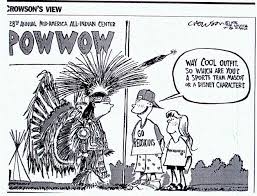
nalaatsi_BG
In this first unit, we are going to explore what terms like ‘Aboriginal’, ‘First Nations’, and ‘Indigenous’ mean, and how these terms have evolved over time. After looking at the language we use when talking about Indigenous peoples in Canada, we’ll examine common stereotypes about Indigenous people. Next, we’ll explore ideas around identity; specifically, the things that shape our own identities.
Let’s start with this video concerning the language we use when talking about Indigenous peoples in Canada. “How to Talk about Indigenous People” from Inuk journalist Ossie Michelin.
Activity 1: Terminology
Activity 2: Evolving Terms
The term “Indigenous” is quickly replacing “Aboriginal”. In a paragraph, tell me what you think of when you hear the term “Indigenous”? (Check out the video below for some other perspectives to help you out!) Do you prefer the term over “Aboriginal”?
Activity 3: “An Indian By Any Other Name”
Read the short story “An Indian By Any Other Name” by Drew Hayden Taylor.
Drew has a very different take on the importance of the language we use to talk about Indigenous peoples. In complete sentences, answer the following:
 |
Activity 4: Stereotypes & Myths Stereotypes and myths abound when it comes to Indigenous peoples in Canada (and everywhere else, for that matter).
|
Check out how many racist sports teams & mascots have already been retired here. In a brief paragraph tell me whether you think this issue matters. Do you think it is important that we eliminate problematic/racist sports teams & mascots?
| Activity 5: Identity is Messy
Identity for most people is complicated. An individual can identify in many different ways, and isn’t necessarily defined or limited to any one identity.
Our identities are complicated and multi-faceted. Drew Hayden Taylor’s Pretty Like a White Boy explores this idea. After reading the story, I’d like you to compose a critical response. At least 2 paragraphs that address the following questions:
Congrats, you are finished the first unit of EFP 12! |